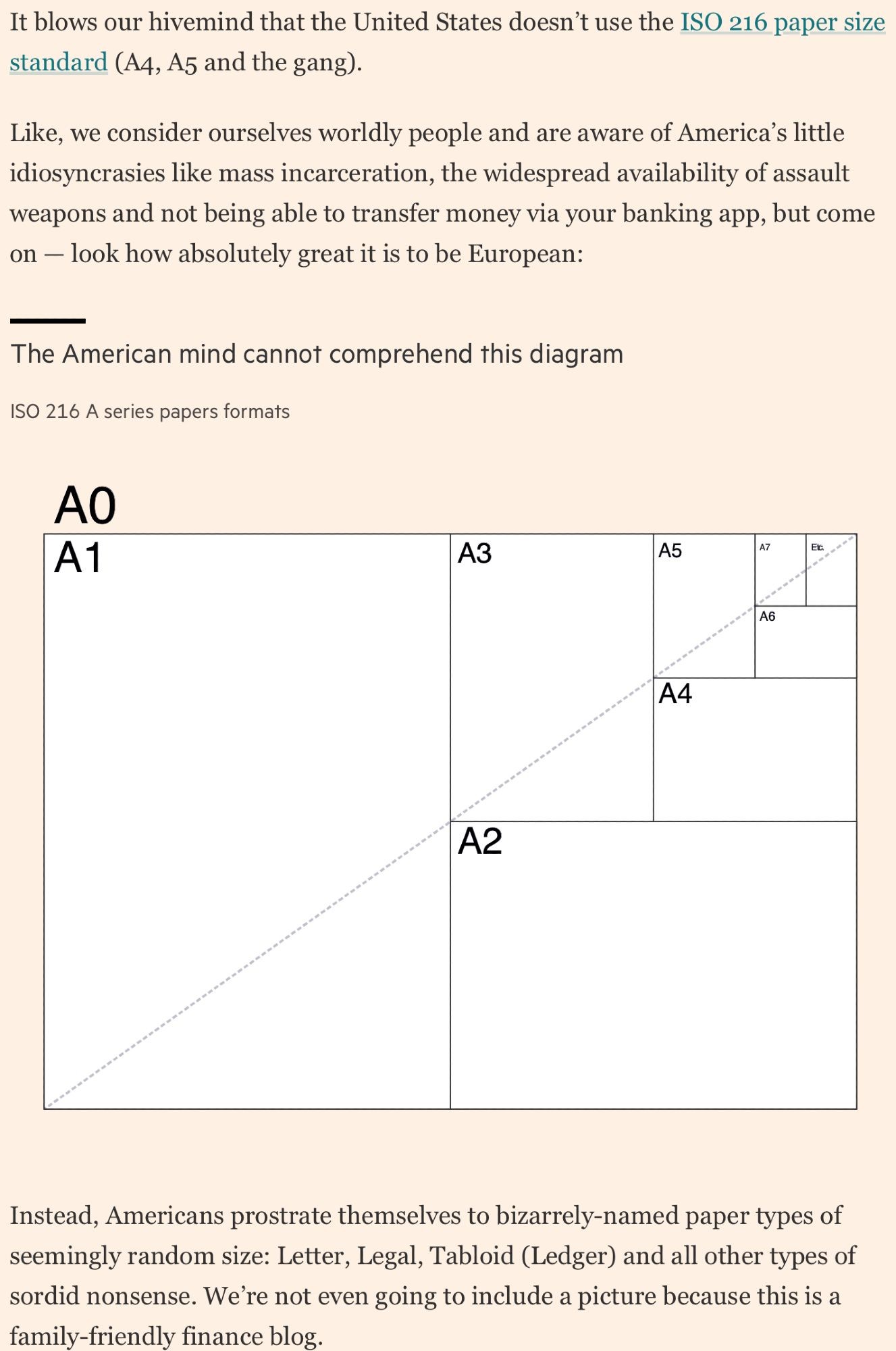this post was submitted on 28 May 2024
1053 points (98.8% liked)
196
16281 readers
3007 users here now
Be sure to follow the rule before you head out.
Rule: You must post before you leave.
founded 1 year ago
MODERATORS
you are viewing a single comment's thread
view the rest of the comments
view the rest of the comments

Commercial printers will print most everything on A0 paper, but since all metric paper is doubling or halving sizes with respect to each other, they can tile a bunch of print jobs into the same A0 paper and then cut them apart, saving machine time by turning a bunch of small jobs into one big job.
US printers also do this, just using larger ANSI sizes instead of larger A sizes. Or they just use rolls.
But US paper sizes don't tile nearly as well as metric paper sizes do, is the point
They do tile, they just don't share an aspect ratio. Two letter sheets make a tabloid or ledger sheet (depending on grain direction of the paper), and two tabloid sheets fit on a broadsheet, which generally comes in rolls so there's a bit of trim because the size comes from actually physically dealing with paper, which is why they're also the names of the newspapers that were printed on them. Like, it doesn't go down from letter like ISO a sizes do, but it generally works well enough.